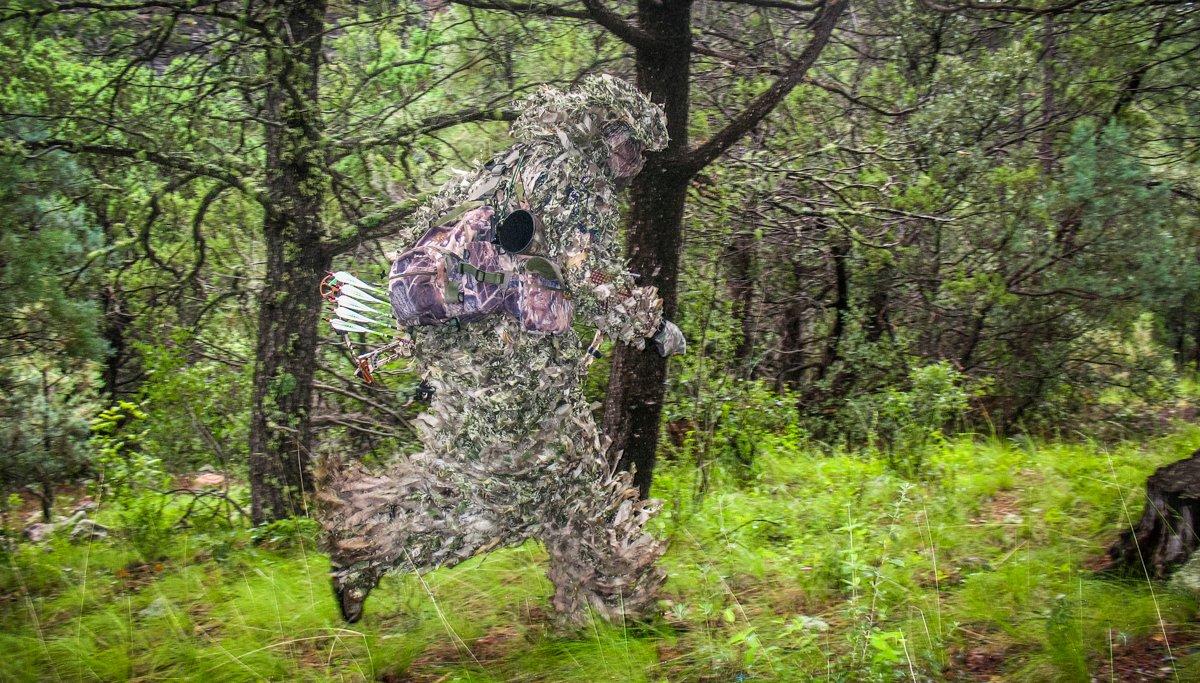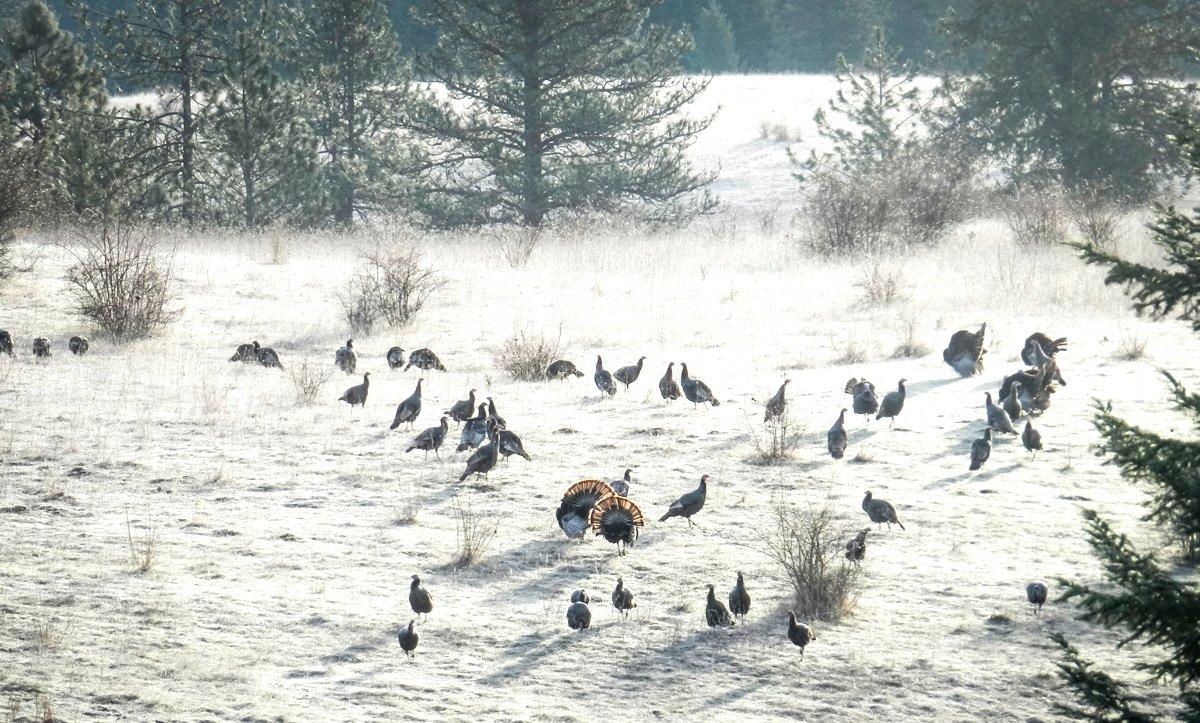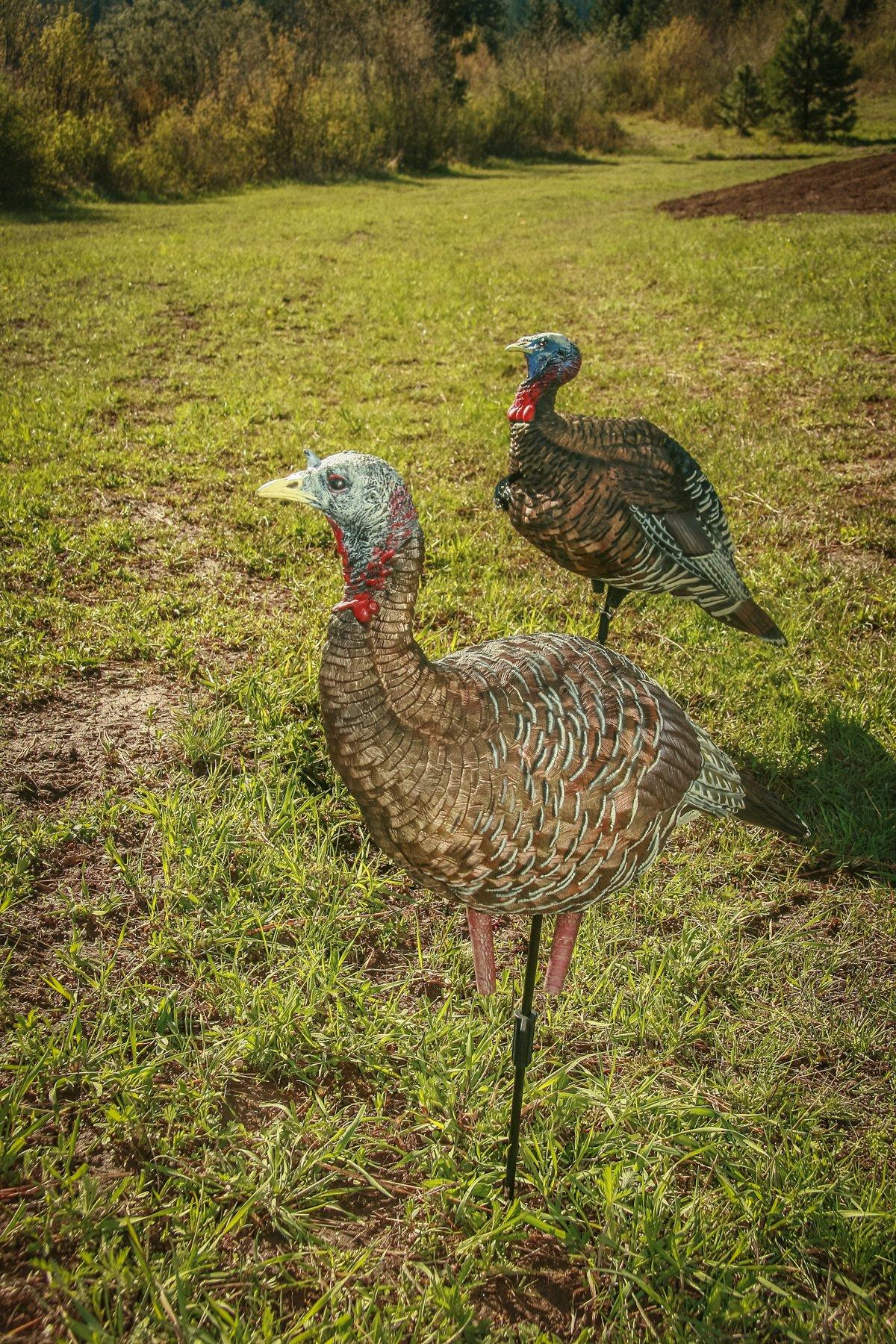Run-'n'-Arrow Ploys Produce Results
You don't need a ground blind to arrow a spring gobbler. With the right approach, run-'n'-arrow ploys produce results.
Editor's note: In the interest of safety, take precautions when repositioning while bowhunting turkeys. Always make sure your arrows are safely contained when on the move.

When I tell people I've killed six-dozen-plus turkeys with bow, they generally assume I spend a lot of time inside pop-up blinds. This is logical because today if you really want to arrow a spring gobbler, that's how it's done. Portable blinds have made bowhunting turkeys almost too easy.
I've certainly tagged gobblers from inside pop-up blinds, but have actually waylaid far more during run-n-arrow missions. This is easily attributed to living in the vast, public-land-dominated West, but I've also successfully applied this approach to Eastern properties bound by strict boundaries ‚ including hard-hunted birds in places such as Upstate New York, Georgia and Mississippi.
© Patrick Meitin photo
Must Read: How to Bowhunt Turkeys without a Blind

Running-and-arrowing for spring gobblers works well for me because I'm inherently antsy and I always feel a bit helpless calling turkeys from pop-ups. I actually kill more gobblers because I'm able to make things happen.
That last point is important. We've all encountered individual gobblers on particular days that had a set destination in mind. No amount of fancy calling would convince them to deviate from an established trajectory. But hustle to circle that seemingly disinterested gobbler, setting up on his predetermined path, and he rolls right into basic calls. I've seen this work too many times to label it coincidence.
More pointed for modern hunters, running-'n'-arrowing works especially well for hunters without time for scouting or to venture out evenings to roost birds for morning hunts. You simply arrive on the scene, await first light and hunt. There are also days when I haven't really planned to hunt, but an appointment falls through or I finish work earlier than expected. This kind of hunting allows me to hit the ground running ‚ and regularly pull success from last-minute forays.
© Patrick Meitin photo
Must Read: Flash Hunt Your Spring Turkey

I like to compare this strategy to bowhunting Western elk ‚ hiking likely habitat (field edges, creek beds or lips of high ground, in the case of turkeys) and pausing at odd intervals to belt out raucous hen yelps, crow caws or even a peacock scream. I then listen intently for a response before covering more ground, looking for sign, keeping ears tuned and eyes peeled.
I find binoculars as vital as calls in this business, slipping up on field edges to probe for feeding turkeys, stopping occasionally while stalking a creek-bed to seek movement, or mounting a vantage to glass distant meadows or fields. Discovering a distant knot of turkeys I'll watch long enough to discern basic patterns, hustling to cut those turkeys off and setting up to call.
© Patrick Meitin photo

Setting up to call run-'n'-arrow turkeys to your bow is a matter of making the best of available cover. There's generally little time to seek the perfect natural blind. I've killed a lot of gobblers that I just stumbled upon, dropping over folded knees and beginning a slate-call sales pitch.
Ideally a natural blind presents itself, a cluster of trees, fallen logs or low spot in disguising brush. Crawl in and make yourself comfortable. Scratch aside noisy leaves (this won't alert distant birds, sounding like feeding turkeys), quickly remove deflecting vegetation or pulling a few weeds into place to improve your hide's effectiveness. A swatch of camouflage material or military-type netting comes in handy when time permits, stretching it between two bushes, for instance, to create an instant blind. Several compact, quick-deploy commercial blind faces are also offered for such approaches.
Decoys also help in these circumstances. I always carry a pair of realistic hard-body fakes, no matter how inconvenient they become. When time permits I typically attempt to stake decoys so responding gobblers must pass my position broadside to address them, with attention focused on the decoys and not me. I have had my best results with a hen/jake pair, the jake poised in the mating position to illicit jealousy from the boss tom.
© Patrick Meitin photo
Must Read: Build a DIY Turkey Hunting Ground Blind Kit

More often natural blinds prove lackluster. This makes tattered leafy camouflage attire highly welcomed on run-n-gun forays. All those loose material tatters better disrupt the human outline and move naturally in the slightest breeze to help complete the illusion. I've drawn on many strutting gobblers while sitting in plain sight while wearing head-to-toe leafy outfits. Gobblers often react, but hold long enough to allow a carefully-aimed shot. I also try to match general camouflage to the terrain I'm hunting, EDGE for deep woods; classic Max-1 in drier habitats, for instance.
Still, shot timing is absolutely hyper critical when hunting off the ground. Whenever possible, timing your draw cycle for when a gobbler passes behind a bush, rock or tree trunk, or waiting for him to turn while strutting to shield his head/eyes with his own fan, is the best possible approach. Lower draw weight or high let-off also allows you to draw well ahead of the shot and await developments.
© Patrick Meitin photo
More Realtree turkey hunting. Follow Realtree on Facebook.







